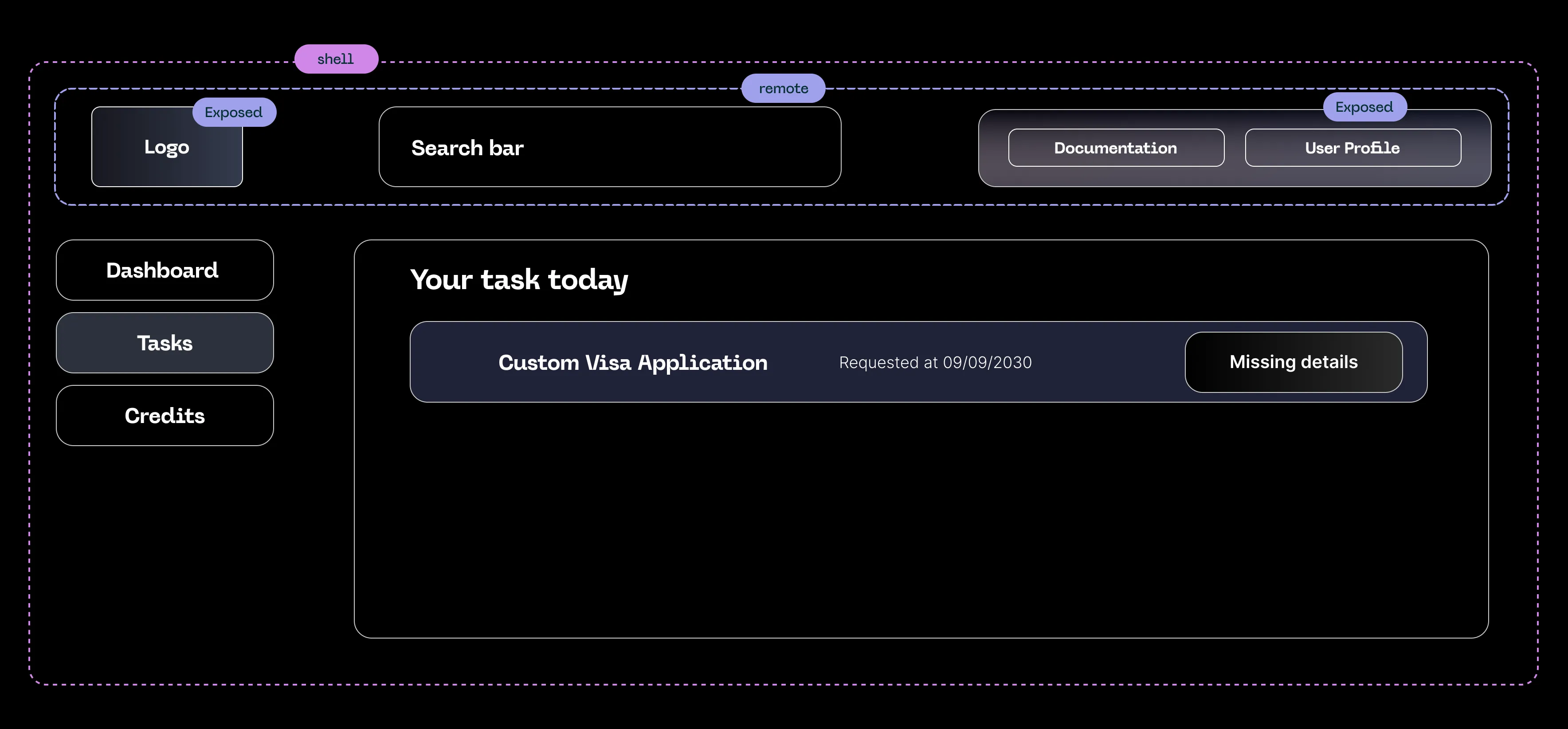Micro-Frontends with Zephyr - The Complete Guide
Micro-Frontends' configuration and deployment processes are known to be complicated and painful to debug. Zephyr Cloud not only to helps with resolving dynamic URL and development process for applications applying Micro-Frontends architecture, but also deployment, versioning and more. This section will walk through the necessary configuration to ensure you have a smooth development workflow and deployment process.
Related Documentation:
- Remote Dependencies - Understanding Zephyr's dependency resolution system
- Versions - Managing application versions
- Architecture - Deep dive into Zephyr's micro-frontend architecture
- Create MF App Tutorial - Step-by-step guide to creating module federation apps
Checklist
Micro-Frontends Configuration
We have first class support for a Micro-Frontends architecture based on Module Federation. Other Micro-Frontends architectures may already work or will be supported in the future.
An example working shell app's configuration can be seen below as well as in our example repository. For detailed bundler-specific configurations, see our bundler guides.
Build remotes first
At the moment. when we are resolving your remote dependencies, we will need the remote applications to be built first. Be wary that the first built remotes should not be consuming any other remotes.
In the example below where you have one shell and one remote, you will need to build the remote first.

Let's take a look at another example. You have a shell application, within the shell app you have two modules: HeaderNav and TaskContent.

The HeaderNav exposes Logo, UserProfileInfo and LeftNav.
The TaskContent exposes SearchBar.
In this scenario, LeftNav is consumed by TaskContent; SearchBar is consumed by HeaderNav.
You will need to build either the TaskContent or the HeaderNav first, comment out the remotes that have yet built and add them back later.
package.json name and Module Federation config
Make sure your remotes' package.json name field is exactly the same as your Module Federation Configurations like so:
You may refer to Zephyr Dependencies example
Git repository
Several details related to git are required to have a successful deployment.
- Project directory must be a git repository
- Current project directory must have a branch
- Current project must have created a commit
Confirm access right
Do you have the admin or editor access to the application you are trying to deploy? You can check it on Zephyr Dashboard.
If you don't have it yet, you can contact your Admin on Zephyr dashboard to invite you and set up the correct access right. Learn more about Teams & Members.
Related Documentation
Getting Started:
- Create MF App Tutorial - Step-by-step module federation setup
- Integration Guides - Add Zephyr to existing applications
- Quick Start - Initial setup guide
Core Concepts:
- Remote Dependencies - Advanced dependency resolution
- Versions - Version management strategies
- Tags & Environments - Deployment workflows
- Architecture - Technical deep dive